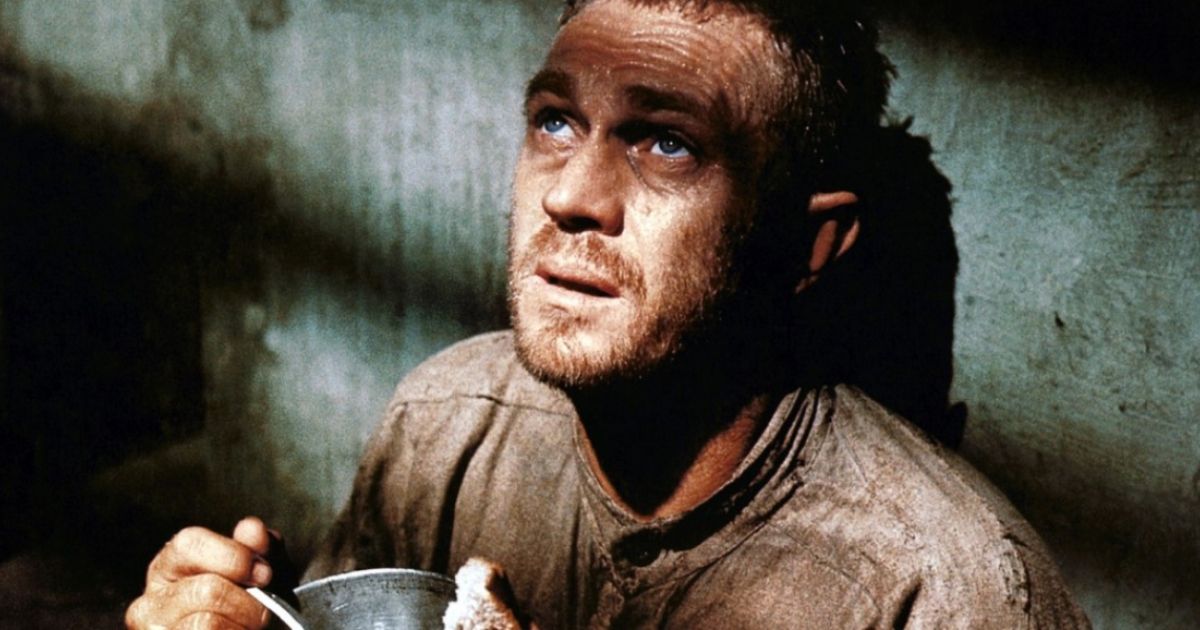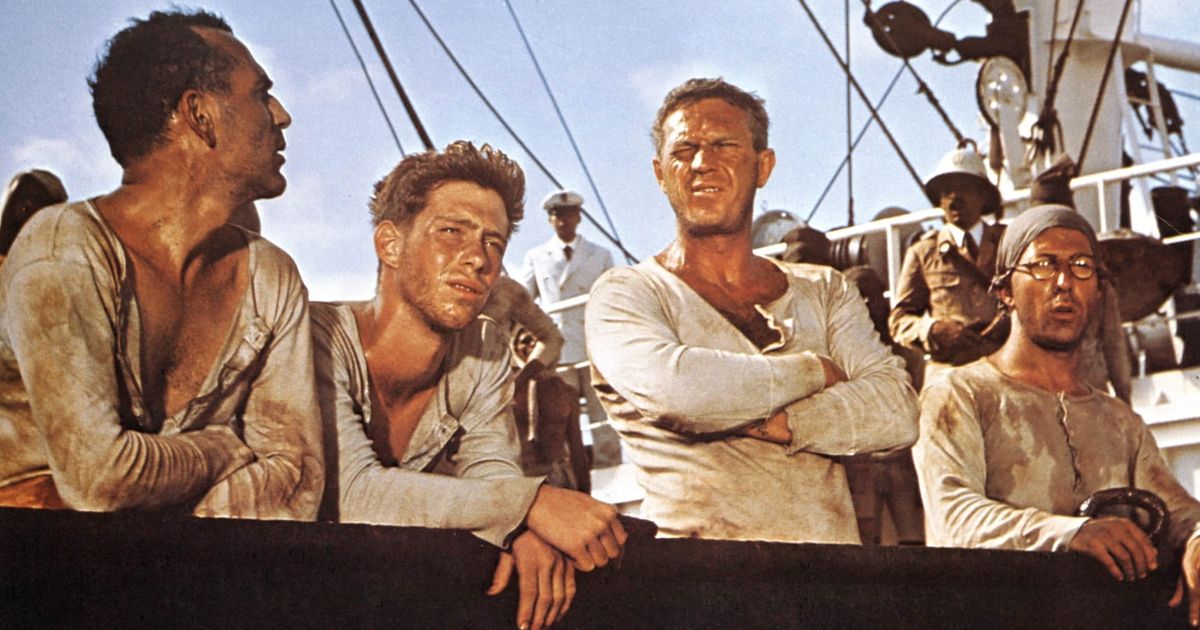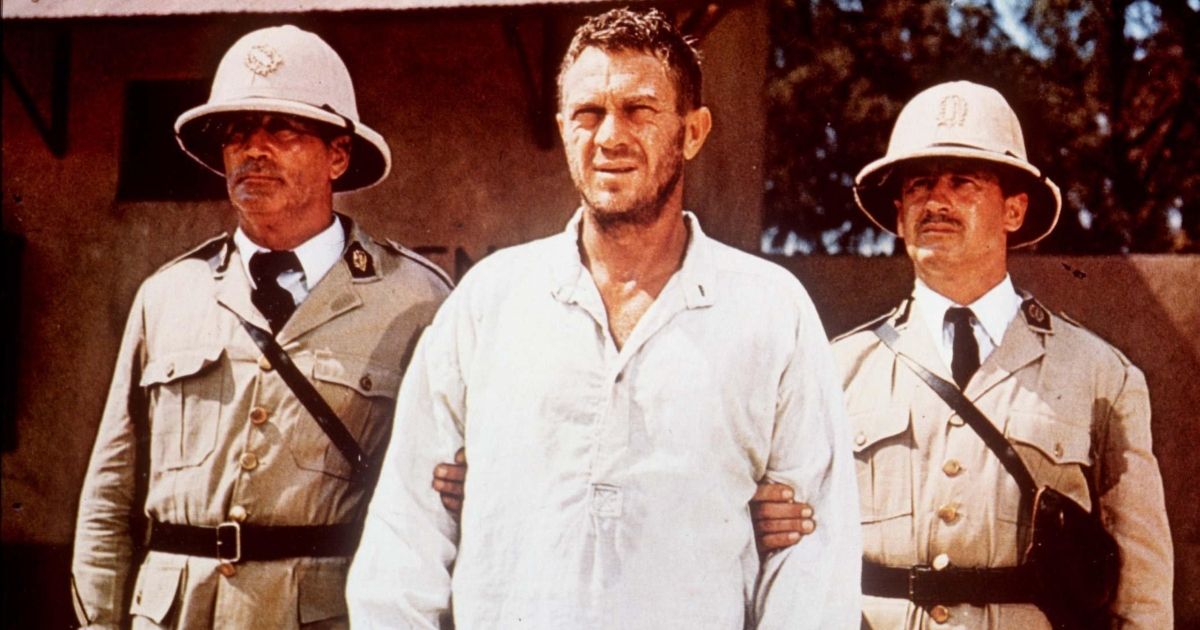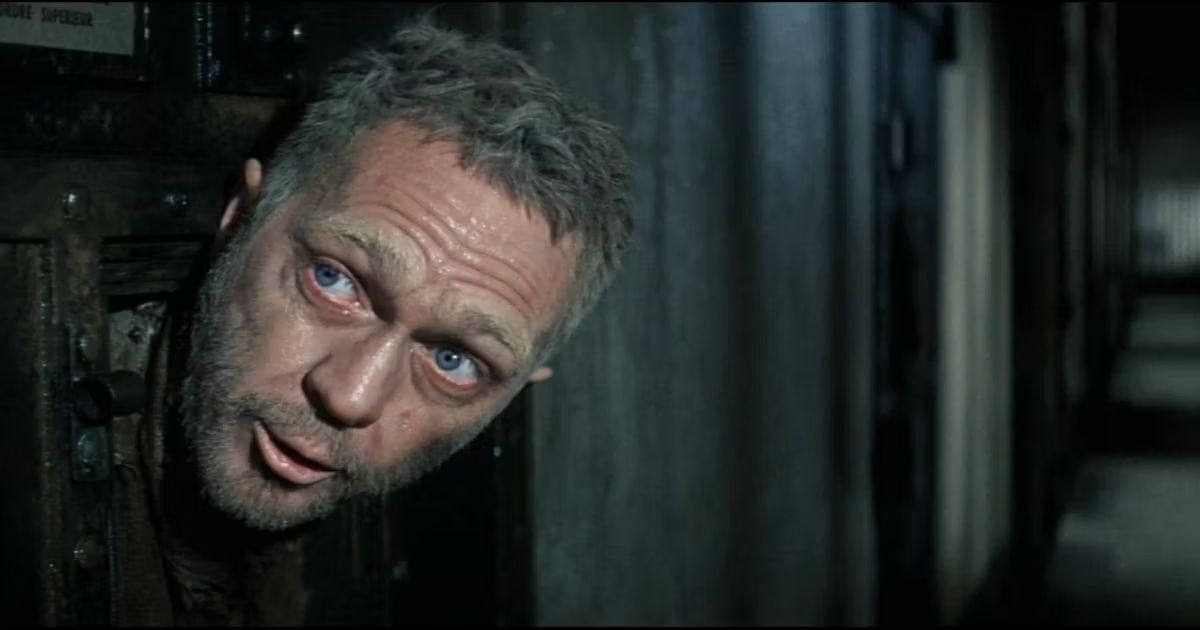There are two main takeaways from 1973’s Papillon. The first is — don’t trust nuns (and after watching Spotlight, maybe the entire Catholic Church). The second — a man is nothing without his freedom, or as Charlotte Brontë wrote in her seminal novel, Jane Eyre, “I am no bird, and no net ensnares me: I am a free human being with an independent will.” When that independent will is forcibly denied in the form of prison, or worse, solitary confinement, a person is merely left to soul-search. Alone with one’s own thoughts and a few sewer rats for company, stuck in this darkened time capsule while the world develops technologically and environmentally, and the civil rights of society improve, reduced to nothing more than a living relic, it’s hardly surprising that Henri “Papillon” Charriére attempted to escape the claustrophobic confines of his colonial captors not once or twice, but three times.
50 years since Charriére’s fascinating memoir was adapted for the screen, it remains as revered now as it was in 1973, perhaps even more so today. This was Steve McQueen’s last truly great movie before his untimely death, so let’s examine why one of his final hours in film was feasibly his best…
What Is Papillon and its True Story About?
The dramatization of the life of Frenchman Henri “Papillon” Charriere is a breathtaking historical account of his life as a falsely convicted felon at a French Guiana penal colony during the early 20th century. Instantly recognizable from his collection of tattoos, including a butterfly adorned across his chest, Papillon (Steve McQueen) along with hundreds of fellow convicts is transported across the Atlantic to the notorious, Devil’s Island.
Falsely accused and found guilty of murder, Henri Charriere faces life imprisonment. With virtually no prospect of parole, the enigmatic detainee enlists the aid of notable fraudster, and counterfeiter, Louis Dega (a great Dustin Hoffman), a bespectacled man of peculiarly nervy temperament. Together, the pair plot to make haste, escaping an island dubbed inescapable, geographically isolated with its treacherous coastline and shark-infested waters. With a harsh tropical climate, a torturous regime, and a mortality rate of 75%, the duo must battle against all odds to earn their freedom.
Papillon Compared to Bullitt and The Great Escape
Papillon is seldom mentioned in the same breath as the likes of The Great Escape and Bullitt as a true classic, nor is it considered one of McQueen’s finest performances. The godfather of the film review, Roger Ebert famously spoke of his disdain for Franklin J. Schaffner’s historical picture, and his subsequent delight when his eyes were finally greeted by the end credits. Upon reflection, it's a damning indictment of a film that deserved more prestige, as well as a central performance worthy of greater eulogy. What many have been incapable of looking beyond, is the issue that this isn’t even the squinty-eyed, rugged blonde’s standout escape movie, yet that assessment in its very nature is incorrect.
Papillon isn’t a movie about escape; rather it’s a concentrated portrayal of a man and his fellow convicts placed in the most inhumane, undignified, and abhorrent conditions. Schaffner's two-and-a-half-hour-long epic is a story about survival. Henri's freedom has not just been stripped, but completely decimated for a crime he did not commit. The semi-autobiographical tale explores the brutalist essence of 20th-century correctional facilities, and their focus on the complete degradation of inmates rather than on their rehabilitation.
Steve McQueen at His Most Expressive and Emotive
McQueen’s depiction of a man physically devoid of fight, but whose mental resilience and fortitude are testament to his character, is mightily seasoned. The former U.S. marine, with his roguishly handsome looks, piercing blue eyes, deep, and characteristically muffled voice is as much a Hollywood icon as Brando, Monroe, and Dean. Renowned for playing the smooth tough guy, whose durability, stunts, and action-man-like background spoke to the demands of the action lead.
He was, and in some ways, still is the face of the action genre. Whether it be the hard-nosed, laconic, and perceptive police officer Bullitt, the motorbike-riding, Captain Virgil Hilts, a.k.a “the cooler king” in The Great Escape, or Vin a contemplative gunslinger in The Magnificent Seven, McQueen was defined by his action scenes, his car and bike chases, his fights, and his lack of emotional capacity. Mr. Cool, Mr. Macho, he was a rebel without a cause.
However, in Papillon, McQueen’s archetypal approach changes, and his display is multidimensional and demonstrative. There’s little reliance on action sequences to pull him through, and it is instead this distinct tenderness to his performance, with his character arc taking him from the McQueen that earned him the reputation of the cool, mysterious man of few words as Louis Dega’s protector, to a character whittled down to his bear bones, vulnerable, fragile, and aged by seven years in solitary confinement. While Dustin Hoffman’s Dega is often viewed as the life-giving acting force in the movie, Papillon symbolized, arguably, the first time we see McQueen in a truly expressive, unrestrained manner. While he delivered further emotive performances as the likes of Tom Horn and Junior Bonner were emotive in nature, neither combine cinematic artistry, storytelling, and evocative displays quite like Papillon.




